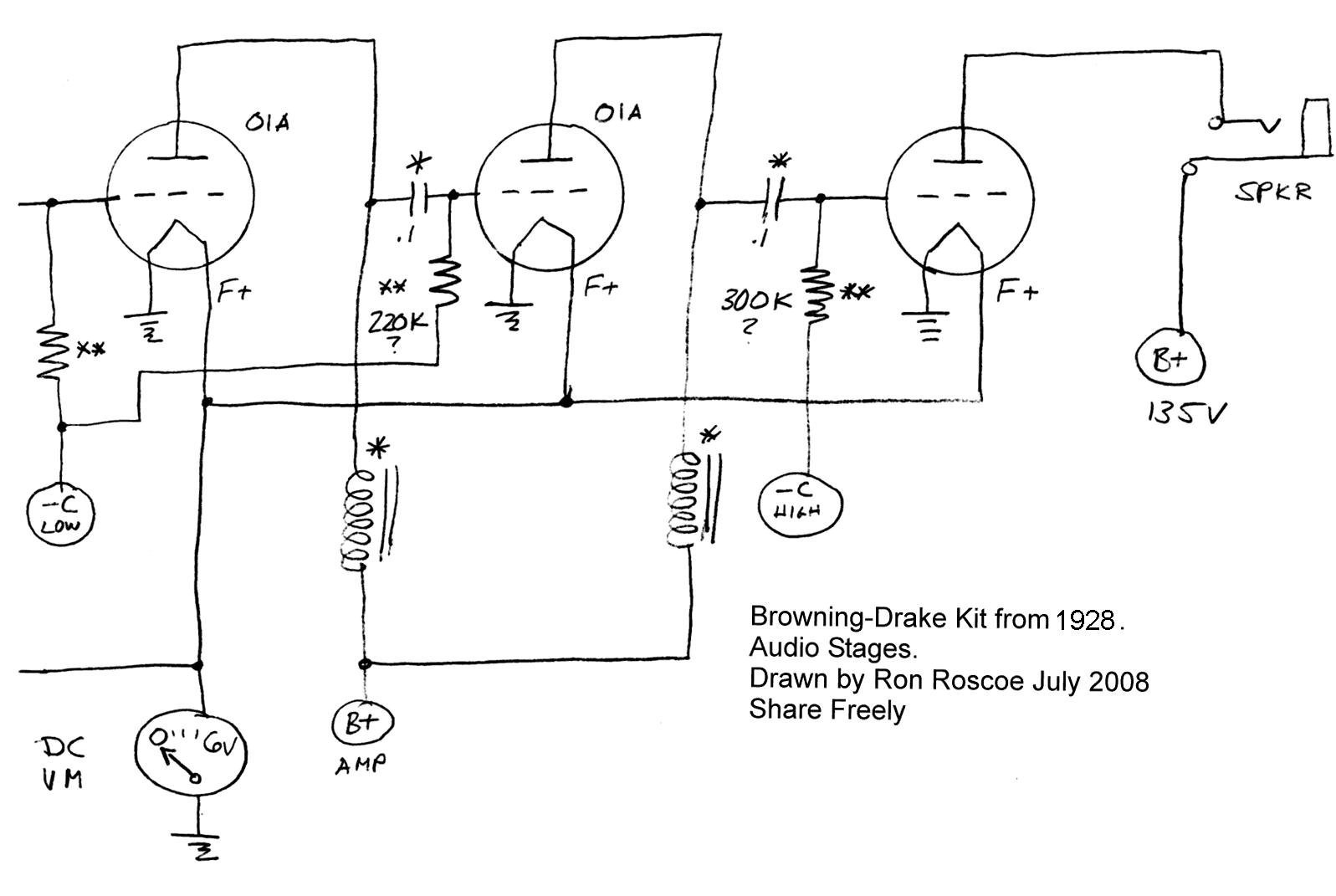- País
- Estados Unidos
- Fabricante / Marca
- Browning-Drake Corp.; Brighton, Massachusetts
- Año
- 1928
- Categoría
- Kit (Partes con instruciones) o Solo Instrucciones
- Radiomuseum.org ID
- 34644
- Principio principal
- RFS (Radio Frecuencia Sintonizada) en general; Screengrid 1926-1935
- Tensión de funcionamiento
- Red: Corriente alterna (CA, Inglés = AC)
- Material
- Materiales diversos
- de Radiomuseum.org
- Modelo: Kit - Browning-Drake Corp.; Brighton
- Anotaciones
- One dial (primary tuning control knob)
- Precio durante el primer año
- 59.00 $
- Ext. procedencia de los datos
- Ernst Erb
- Procedencia de los datos
- Radio Collector`s Guide 1921-1932
- Otros modelos
-
Donde encontrará 46 modelos, 20 con imágenes y 14 con esquemas.
Ir al listado general de Browning-Drake Corp.; Brighton, Massachusetts
Contribuciones en el Foro acerca de este modelo: Browning-Drake Corp.: Kit
Hilos: 1 | Mensajes: 4
Dear Radiophiles, Ron Roscoe has traced the schematic for his Browning-Drake Kit receiver from 1928.
This receiver employs positive feedback with opposite goals, the first reduces gain from oscillation conditions in the RF stage, while the other increases gain to a point just under oscillation in the regenerative detector:
First, Miller capacitance neutralization is acchieved with positive feedback applied from the secondary of the output RF transformer to the input grid of the RF triode.
Second, Postive feedback current is fed from the plate circuit of the regenerative detector to reinforce the detection efficiency of grid-leak detection. The non-linear detection characteristic of the grid is one of the steps around the positive feedback loop. The positive feedback sharpens the non-linearity of the grid transfer function that is necessary for detection. Much of the sensitivity that a regenerative detector provides comes from the improved detection efficiency, not just the raw increase in overall gain from PFB.
The coils marked "*" at the audio stage plates are integrated with their coupling capacitors marked "*", in National Impedaformers. This one of several coupling schemes that show up in different versions of this kit.
I repaired the National Impedaformer for Ron. I melted out the wax and added a 0.1uf coupling cap, while disconnection one end of the existing cap. The choke was open at it's solder connetions, so it was easy to repair it.
Rivets were drilled out. Heat gun melted out the wax
Just enough heat was used to melt wax. Insulating paper pieces, and integral 0.1uF capacitor.
Grid bias resistor holder visible at the top could be used only for first stage, where zero volts bias was consistent with small audio signals. The wooden coil bobin was removed from the core by twisting the laminations.
Regards,
-Joe
Joe Sousa, 10.Aug.09

